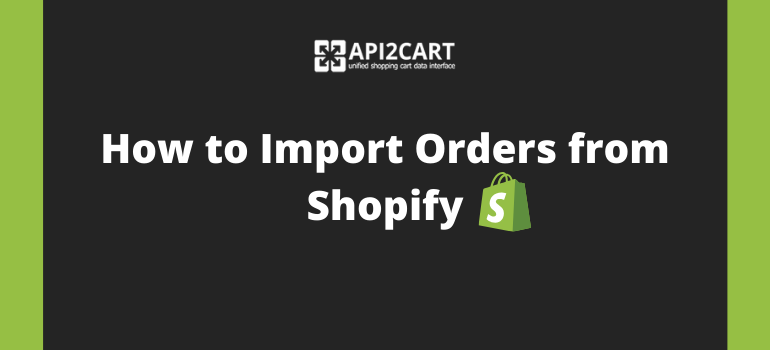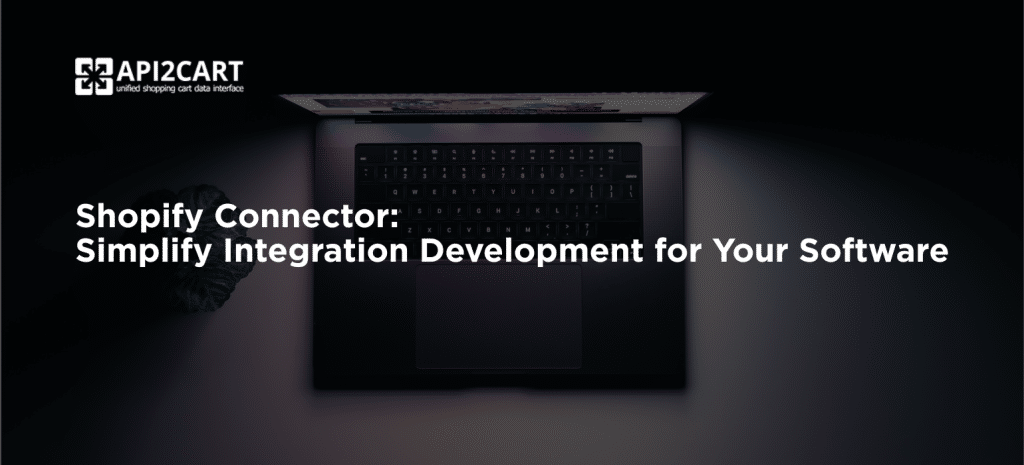
Import orders from Shopify with ease using API2Cart. Shopify, being one of the most popular eCommerce platforms, offers many opportunities for seamless order importation, helping software providers enhance their services for e-retailers.
With API2Cart, you can easily import orders from Shopify and integrate the data into your business system.
A significant number of eCommerce software providers are searching for the possibility to develop integration with Shopify and import Shopify orders. They need it, as the connection with this platform allows them to provide their services to the Shopify sellers. Moreover, it enables access to all the data from the Shopify databases needed to provide their software functionality.
In this article, we are going to explore how your software can import orders from Shopify easily and automatically. Also, we will dig deeper into the process of developing a connection with this popular shopping platform.
How to Import Orders from Shopify to Your System
Shopify is one of the leading eCommerce platforms, with more than 3 million online stores and more than $7 billion in sales. It is popular in the United States (2,571,000 + e-stores), United Kingdom (167,000+ e-stores), Australia (120,000+ e-stores), Canada (97,000+ e-stores) and Germany (92,000+ e-stores).
Shopify API is a tool that software providers can use to access data from Shopify-based eCommerce stores and use it for their own purposes. The API supports both XML and JSON, and works with such types of HTTP requests as GET, POST, PUT, and DELETE. In addition, it works with methods such as Category, Customer, Order, Product, and others (you can find them in the API Reference section of the documentation). Each method has its purpose and properties that help you use it in a way that best fits your needs.
The Meaning of Shopify Integration
Shopify integration allows software providers to integrate their applications with the Shopify eCommerce platform. This enables those software providers who want to reach Shopify's large base of online retailers.
Without a well-developed Shopify integration, software providers cannot help e-store owners to organize and automate their retail process.
Why You Need to Develop Shopify Integration and Get the Data From This Platform
A significant amount of online store owners have chosen the Shopify platform for running their eCommerce businesses. That is why eCommerce software vendors are looking for various options for developing the integration with this shopping platform. Their main goals are to get access to the valuable data connected, for example, with orders from e-stores built on Shopify and manage it for their systems’ purposes.
Benefits of Shopify PIM Integration
A significant amount of online store owners have chosen the Shopify platform for running their eCommerce businesses. That is why SaaS vendors are looking for various options for developing the integration with this shopping platform. Their main goals are to get access to the valuable data connected for example with orders from e-stores built on Shopify and manage it for their systems’ purposes. Without integration, SaaS app providers who work in the eCommerce sphere cannot propose their services to retailers.
However, building a connection with Shopify and importing order data from it is a hard task. It requires a qualified developers’ team who’s work costs thousands of dollars per month. Also, it needs further maintenance and upgrades.
Import Orders from Shopify via API2Cart
As you can see, API2Cart makes it possible to import orders from Shopify with the help of provided API methods. Using this service, you won’t need to spend your valuable resources such as time and money on developing the integration with Shopify and retrieving the data from it.
Moreover, API2Cart supports the integration with more than 60+ other shopping platforms and marketplaces. This list includes Magento, OpenCart, BigCommerce, PrestaShop, Amazon, eBay, and others.
So, if you provide ERP, shipping management, order management or inventory management software for retailers, and need to work with order data from Shopify or any other platform, you can try API2Cart. We provide 24/7 customer support so that you can contact us by phone, email, or chat at any time.



